In New York City, where the pace of life is fast and energy demands are at an all-time high, it becomes crucial to understand and analyze the average electric bill for residents and commercial properties. With an average electric price of 23.60 ¢/kWh, the average electric bill in NYC is close to $194 per month, which adds up to $2,328 per year.
Jackery Solar Generators has a high-performing capacity to charge almost 99% of household appliances. The Jackery Solar Generator 3000 Pro, Jackery Solar Generator 2000 Plus, and Jackery Solar Generator 2000 Plus Kit (4kWh) can be a great addition for those who aim to lower their monthly electric bill and save a great deal on their monthly living expenses.
What Is The Average Electric Bill In New York?
Residential electric rates in the US range from 6 ¢/kWh to 71 ¢/kWh, depending upon demographics and state laws. The average electric bill in New York is 23.60 ¢/kWh. With an estimated monthly usage of 826 - 1025 kWh, the state's average monthly electric bill comes at roughly $194.93 - $241.90. The average electric bill in the United States is $147.70, with a monthly usage of 899 kWh and an average electricity rate of 16.43 ¢/kWh.
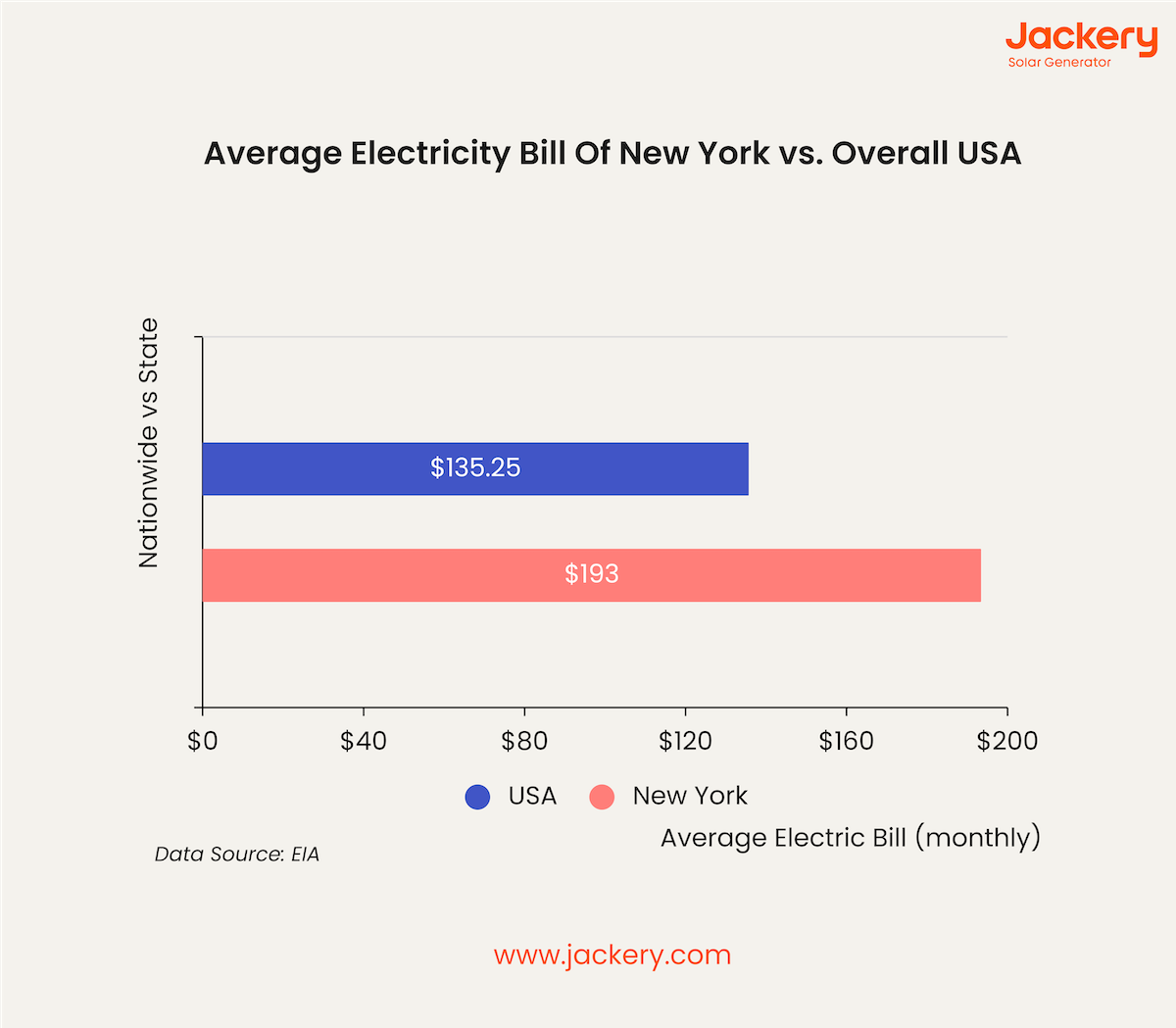
NYC's average electric bill is comparatively higher than the average of the entire US, suggesting that the residents of the fourth-most populous state pay roughly $58.36 more per month than the residents of other states.
|
State |
Avg. Bill |
Avg. Rate |
Monthly Usage |
|
New York |
$194.93 |
23.60 ¢/kWh |
826 kWh |
|
Utah |
$86.21 |
11.01 ¢/kWh |
783 kWh |
|
New Mexico |
$91.21 |
13.84 ¢/kWh |
659 kWh |
|
Nebraska |
$127.45 |
12.22 ¢/kWh |
1043 kWh |
|
Arizona |
$164.46 |
15.50 ¢/kWh |
1061 kWh |
|
California |
$183.56 |
34.31 ¢/kWh |
535 kWh |
|
Florida |
$151.43 |
13.63 ¢/kWh |
1111 kWh |
|
Kentucky |
$141.44 |
12.94 ¢/kWh |
1094 kWh |
|
Missouri |
$135.92 |
12.62 ¢/kWh |
1077 kWh |
Source: Saveonenergy
While NYC's average electric bill is $194.93 per month, which seems a little higher than that of other states like Utah and New Mexico, it is important to consider that New York City is a densely populated urban center with high demands and operating costs. Additionally, the electricity rate is also on the higher end compared to the other states.
An electricity rate or tariff is defined as the rate at which a privately owned investor or government body sells electrical energy to the end user. In different scenarios, these end-users can be the owners of the residential or can own different commercial buildings.
|
Electricity Provider |
300 kWh |
450 kWh |
583 kWh |
|
Delivery |
$45.98 |
$68.19 |
$100.71 |
|
Commodity |
$39.79 |
$44.01 |
$66.34 |
|
MAC |
$3.12 |
$4.55 |
$6.17 |
|
RDM |
$1.96 |
$2.86 |
$2.75 |
|
Surcharges |
$1.73 |
$2.53 |
$3.42 |
|
Total |
$88.66 |
$116.42 |
$179.39 |
Note: The electricity rates of the providers are subject to change, so make sure to check their official website.
What Is The Average Electric Bill For Different House Sizes in New York?
The average electric bill in NYC varies depending on the location, number of active appliances, residents in the property, and others. Here is a breakdown of the average electric bill for different bedroom sizes in NYC:
Average Electric Bill For 1-Bedroom House In NYC
A typical one-bedroom house in NYC will have an average electric bill of $70 - $100 per month, depending on the season. Rates are higher during the peak seasons and lower during the off-peak seasons.
Average Electric Bill For 2-Bedroom House In NYC
A typical 2-bedroom house or apartment in NYC will have an average electric bill of $194.93 and monthly usage of an estimated 826 kWh. The house will have limited appliances, like one television, one refrigerator, etc., which would limit the monthly electric bill.
Average Electric Bill For 3-Bedroom House In NYC
With a monthly usage of 1025 kWh, the average electric bill for a 3-bedroom house in NYC, the residents will have to pay $241.90 monthly. There is a possibility that in a 3-bedroom house, there will be more residents, and they will use different electrical appliances simultaneously, leading to an increase in monthly usage and overall bill value.
As one can analyze from the different bedroom sizes, the increase in household size and potentially greater appliance usage contribute to the increase in the monthly average electric bill.
How Much Does It Cost To Live In New York?
With a booming economy and a large manufacturing sector, New York is one of those states characterized as the world's financial center. Given the fact that the world's largest corporations have their home offices in Manhattan and nearby areas, the cost of living in New York is higher than in the rest of the places in the US.
The average cost of living in NYC depends upon multiple factors, like the location, taxes you pay, preferred mode of transport, and utility usage at home. As of January 2024, living in New York costs roughly $30,000 yearly, including housing and other utilities.
Some of the most common utilities that one uses in New York City are:
- Electricity: Electricity is one such utility that increases the average cost of living in New York. An average New Yorker spends around $216 per month on electricity alone. Although this is an average number, the monthly average electric bill in NYCdepends on multiple factors.
- Parking: Parking is yet another hefty utility expense that a typical New Yorker has to bear if they own a car. In NYC, parking costs an average of $150 per month.
- Gas: Due to the extreme winter weather from December to March, most New Yorkers use gas to warm their apartments. Many households also use gas to power their stoves for cooking. On average, gas costs another $100 per month.
- Water and Trash Disposal: Typically, monthly water charges are included in the apartment rent. However, separately, it costs $20 per month. Similarly, trash disposal also costs an average of $20 per month.
- Internet and Cable: A monthly internet and cable connection for a 60 Mbps plan or higher plan would cost roughly $70.21 monthly. These charges also depend on the service provider and the monthly data plans.
Apart from the common utilities, several other expenses constitute the average monthly cost of living in NYC.
- Housing: Housing is an important investment and expense for most American households. NYC is one of the costliest cities to live in. Home prices in NYC start at around $1.67 million, whereas the average monthly rent is around $4,500.
- Food: The cost of food varies from state to state. In New York, a coffee costs $5.99, a dozen eggs costs around $4.34, a gallon of milk costs $4.87, and a bread loaf costs around $3.97.
- Healthcare: If your employer or company does not cover healthcare, you will have to pay roughly $167.58 for a doctor's visit. A dentist's visit would cost $159.53, and an Optometrist's visit would cost $118.28.
- Transportation: In NYC, transportation expenses depend on multiple factors. The monthly pass costs $132, and taxi charges start at $5. Similarly, 1 liter of gasoline costs $1.02.
Here's an illustration of the average monthly cost of living in NYC:
|
Utilities |
Avg. Monthly Bill |
|
Electricity |
$216 |
|
Parking |
$150 |
|
Gas |
$100 |
|
Water and Trash Disposal |
$20 |
|
Internet and Cable |
$70 |
Note: The monthly bills of different utilities are subject to change.
What Factors Affect The Average Electric Bill In New York?
The cost of utilities in New York City is a significant expense for residents, averaging around $1574 for a single person. However, these numbers are subject to fluctuations based on several factors, like:
- Season: NYC experiences multiple seasons, each affecting the overall monthly expenses of the residents. During the winter season, residents rely heavily on heating systems, which leads to an increase in the average electric bill. Similarly, during the summer season, the demand for air conditioners surges, which again leads to an increase in the monthly electricity consumption.
- Square Footage: The size of apartments directly impacts the utility costs. Large properties would require more extensive HVAC systems to maintain indoor temperatures. In larger size houses or apartments, there is more space to heat or cool, which significantly increases energy consumption.
- Location: New York City is spread across 472.43 sq. miles and consists of several metropolitan areas. The demand for utilities in densely populated areas like Brooklyn or Manhattan increases the overall prices. Additionally, the regulatory policies and taxes vary depending on the location.
- Number of Occupants: More individuals in a household directly translates to increased demand for internal systems, like water, food, electricity, internet, etc. With more people sharing the residential property, appliances are used more, which leads to elevated utility bills.
How To Pay Less For Your Electricity In New York?
As discussed here, the cost of living in New York is sky-high, and given the fact that the average electric bill in NYC is also increasing every year, it is high time to find ways that would help you reduce your monthly electricity charges.
Some of the best ways that would help you lower your electricity rates in New York are:
Reduce Energy Vampires
Energy vampires are electronic appliances that continue to draw power even when you have put them on standby mode, like toasters, coffee machines, and kettles. It is always recommended to keep an eye on them and unplug them when they are not in use.
Upgrade Your Appliances
If it fits your budget, you can upgrade your home appliances to energy-efficient appliances, which are regulated by the US Environmental Protection Agency.
Peak Usage Time
In NYC, the peak usage times are between 8:00 AM and midnight daily. During these times, electricity is more expensive. However, if you can shift some of your everyday consumption to the off-peak hours, then you will find a significant decrease in your monthly average electric bill.
Invest In Solar Energy
Solar energy would save you a lot of money by reducing or, in some cases, eliminating your monthly electric bill.
Based on the intensity and duration of sunlight hours in New York City, an average household would require a 10.2 kW solar panel system to offset their annual electricity consumption, which is estimated to be 12,300 kWh per year. Even though the initial cost of investing in such a system would come to around $32,000, one can expect to save $2,300 in the first year, $12,100 over a five-year period, $25,700 over a 10-year period, and $57,900 over a 20-year period.
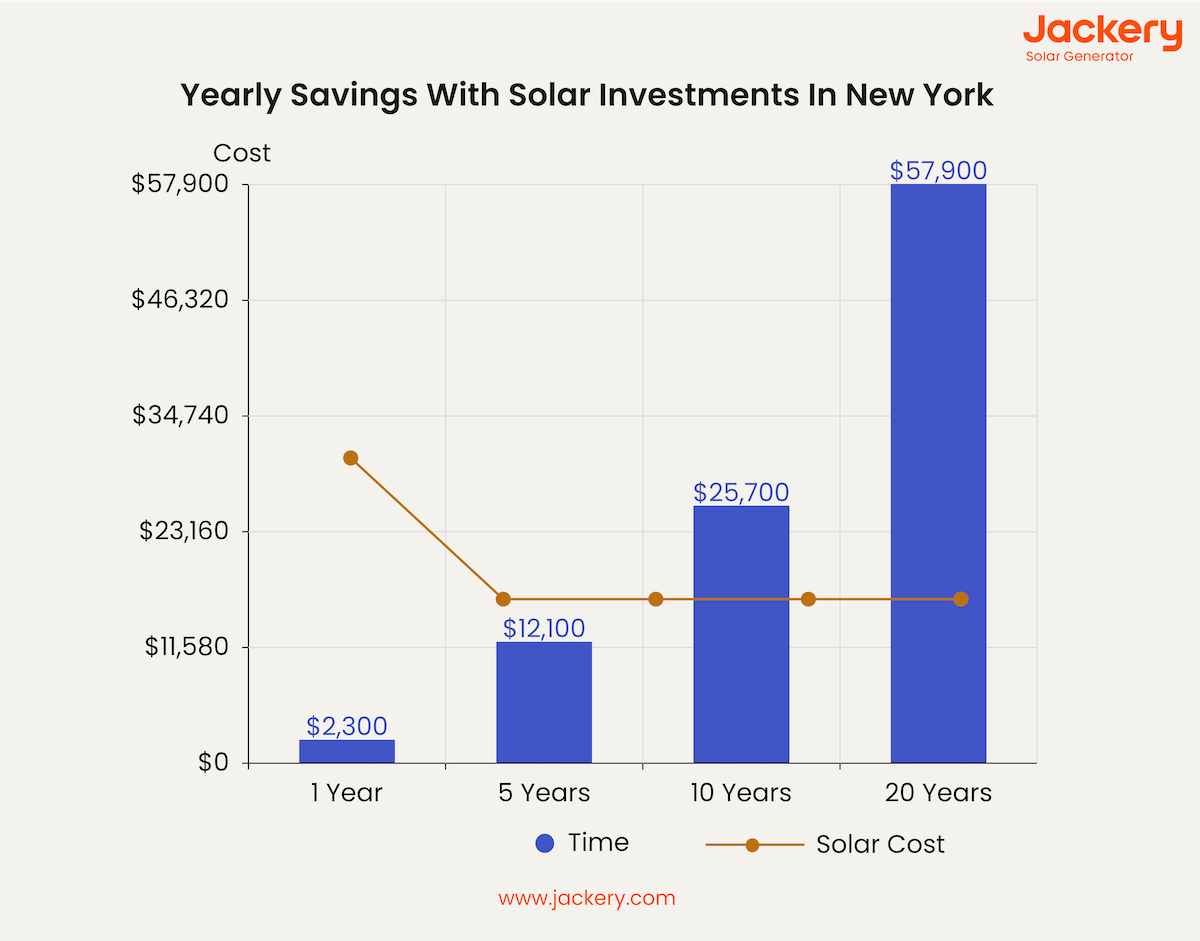
If you are planning to start utilizing solar energy to charge your everyday appliances in NYC, you can get Jackery Solar Generators as they are comparatively cheaper than full-fledged installation, and since the products are compact, you can easily carry them from one place to the other.
Jackery Solar Generators For Lowering Your Electric Bills
Jackery is a pioneer brand in solar generators, solar panels, and battery backups. Jackery Solar Generators can easily be charged using AC adapters and car chargers or by plugging them right into Jackery SolarSaga Solar Panels, which are compact and easy to carry.
The Jackery SolarSaga Solar Panels have built-in monocrystalline silicon solar cells that harness the power of sunlight. These cells absorb solar radiation, converting it into electricity, which is later transferred to Jackery Explorer Portable Power Stations. With a built-in pure sine wave inverter, this electrical current is converted into AC electricity that helps charge a wide array of household appliances, like televisions, refrigerators, heaters, air conditioners, etc.
Jackery Solar Generator 3000 Pro
The Jackery Solar Generator 3000 Pro comes with an NMC battery with a capacity of 3024 Wh. It can charge 99% of home appliances, making it the best option for those who want to use solar energy to charge air conditioners, televisions, washing machines, etc. The Jackery Solar Generator 3000 Pro can be fully recharged in only 3.5 hours by connecting it with 6*Jackery SolarSaga 200W Solar Panels.

|
|
Solar Generator 3000 Pro |
|
Capacity |
3024 Wh |
|
Battery Cell |
NMC |
|
Cycle Life |
2000 cycles to 70%+ capacity |
|
Recharging Methods |
Solar Recharging: 3.5 H (6*Jackery SolarSaga 200W Solar Panels) Car Recharging: 35 H Wall Recharging: 2.4 H |
|
Output Ports |
AC Output (x1): 120 V~ 60 Hz 25 A Max AC Output (x3): 120 V~ 60 Hz 20 A Maximum USB-C Output (x2): 100 W Maximum, 5 V⎓3 A, 9 V⎓3 A, 12 V⎓3 A, 15 V⎓3 A, 20 V⎓5 A |
|
Working Hours |
Vacuum Cleaner (1500 W): 1.7 H Rice Cooker (1000 W): 2.5 H Sump Pump (800 W): 3.2 H Refrigerator (800 W): 3.2 H |
|
Customer Review |
"Purchased a second option to run the fridge and upright freezer if the power goes out. To use at night with no noise or fumes. I can run both for about 22 hours on a full charge." -- Tim W. |
Jackery Solar Generator 2000 Plus
The Jackery Solar Generator 2000 Plus has a LiFePO4 battery with a capacity of 2042.8 Wh. A single Jackery Explorer 2000 Plus Power Station has the capacity to support up to 5 additional battery packs, expanding its capacity from 2 kWh to 12 kWh. By adding the Jackery Battery Pack 2000 Plus, the Jackery Explorer 2000 Plus Portable Power Station can later be expanded to 24 kWh capacity.

|
|
Solar Generator 2000 Plus |
|
Capacity |
2-24 kWh |
|
Battery Cell |
LiFePO4 |
|
Cycle Life |
4000 cycles to 70%+ capacity |
|
Recharging Methods |
Solar Recharging: 2 H (6*Jackery SolarSaga 200W Solar Panels) Car Recharging: 25 H Wall Recharging: 2 H |
|
Output Ports |
AC Output (×4) 120 V~ 60 Hz, 20 A Maximum AC Output (×1) 120 V~ 60 Hz, 25 A Maximum USB-A Output (x2): Quick Charge 3.0, 18 W Maximum USB-C Output (x2): 100 W Maximum, (5 V, 9 V, 12 V, 15 V, 20 V up to 5 A) |
|
Working Hours |
Coffee Machine (1500 W): 1.1 H Electric Kettle (1500 W): 1.1 H Toaster (1100 W): 1.5 H Microwave Oven (1000 W): 1.7 H |
|
Customer Review |
"Purchased for home backup but I also take these out with me on long camping trips. It will easily power whatever you plug in it and the 30 amp RV plug is a nice addition." -- Chris. |
Jackery Solar Generator 2000 Plus Kit (4kWh)
The Jackery Solar Generator 2000 Plus Kit (4kWh) is designed to power heavy-duty appliances, such as commercial washers, refrigerators, dryers, and water heaters. With a battery capacity of 4085.6 Wh, it can power appliances that require 6000 W power. Additionally, the Jackery Solar Generator 2000 Plus Kit (4kWh) comes with a LiFePO4 battery.
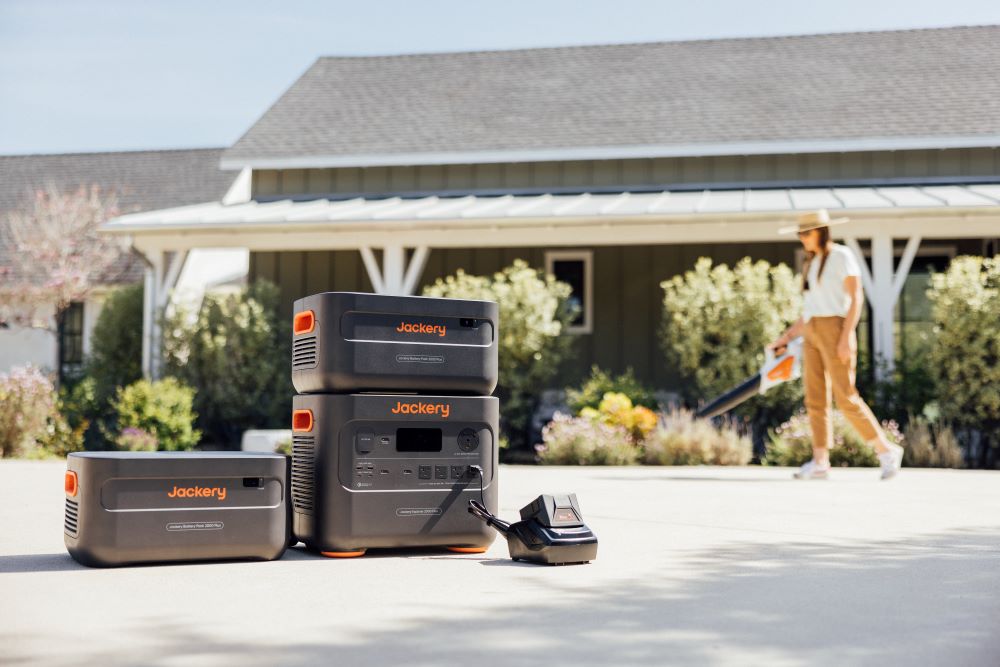
|
|
Solar Generator 2000 Plus Kit (4kWh) |
|
Capacity |
2-24 kWh |
|
Battery Cell |
LiFePO4 |
|
Cycle Life |
4000 cycles to 70%+ capacity |
|
Recharging Methods |
Solar Recharging: 2 H (6*Jackery SolarSaga 200W Solar Panels) Car Recharging: 25 H Wall Recharging: 2 H |
|
Output Ports |
AC Output (×4) 120 V~ 60 Hz, 20 A Maximum AC Output (×1) 120 V~ 60 Hz, 25 A Maximum USB-A Output (x2): Quick Charge 3.0, 18 W Maximum USB-C Output (x2): 100 W Maximum, (5 V, 9 V, 12 V, 15 V, 20 V up to 5 A) |
|
Working Hours |
Electric Grill (1800 W): 1.9H Air Conditioner (1500 W): 2.3 H Microwave (1300 W): 2.6 H Mixer Grinder (600 W): 5.7 H |
|
Customer Review |
"I'm impressed with the quality and design (even the packaging) of the Jackery products and am looking forward to replacing a gas guzzling generator(s). One unique feature that I particularly like is the expansion capabilities" -- Randall MacPherson. |
New York Average Electric Bill FAQs
What size of solar generator do I need for my house in New York?
The size of the solar generator that you can use in New York depends on various factors. Here's a typical scenario for someone living in the Brooklyn area in a 2-bedroom apartment. They are charging a Washing Machine (1400 W), Sump Pump (800 W), and Standard Light Bulb (60 W) simultaneously with the Jackery Solar Generator 3000 Pro:
Working Hours = Battery Capacity in Wh * 0.85 / Wattage Consumption of the Appliances
Working Hours = 3024 Wh * 0.85/2260 W = 1.13 H.
Since there will be some power loss while charging the appliances, we have multiplied the capacity by 0.85.
How much is the average electricity bill in New York City?
With a monthly usage of roughly 826 kWh, New York City's average monthly electric bill is around $194.93. According to historical data, the average electric bill in NYC is forecasted to double in the next five years.
Why is my electric bill so high in NY?
There can be several reasons affecting your monthly electric bill in NY. At the same time, the price set by power plants or other generators on the statewide grid also impacts the monthly electric bill.
How much is the electric bill in NYC per month?
The average monthly residential electricity bill in New York is $194.93, which is 43.13% more than the national average monthly bill of $147.70.
Is electricity expensive in New York City?
Yes, when compared to the different states in the United States, the electricity rate in New York City is 23.60 ¢/kWh, which is significantly higher than the national average.
Final Thoughts
There is no denying the fact that the cost of living in New York City is rising because of the market and economic growth. By analyzing the average electric bill in NYC, one can estimate how much they need to save every month if they plan to live in this metropolitan region. With the electricity price at an all-time high, this is the best time to shift towards solar generators that would reduce your monthly average electric bills. Jackery Solar Generators has great battery capacity. Once fully recharged, Jackery Solar Generators can charge up to 99% of your household appliances. With a lightweight design and multiple product options, Jackery offers a sustainable model for all.







































































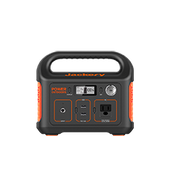

















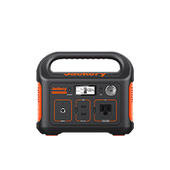


















![What Is The Average Electric Bill In New York [2024 Updated]](http://www.jackery.com/cdn/shop/articles/average_electric_bill_in_nyc_by_jackery.jpg?v=1712894445)






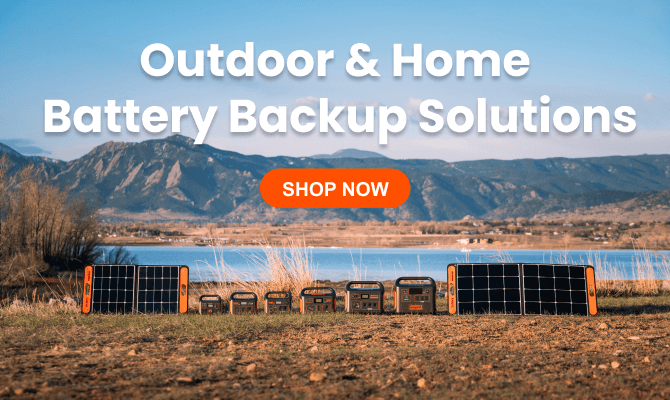
Leave a comment